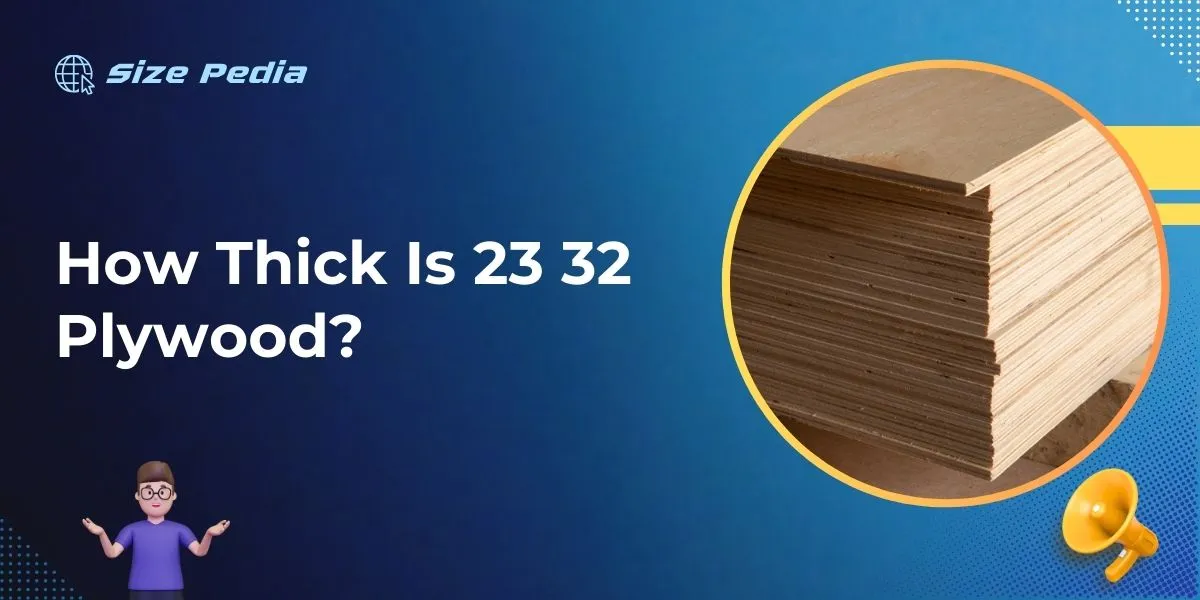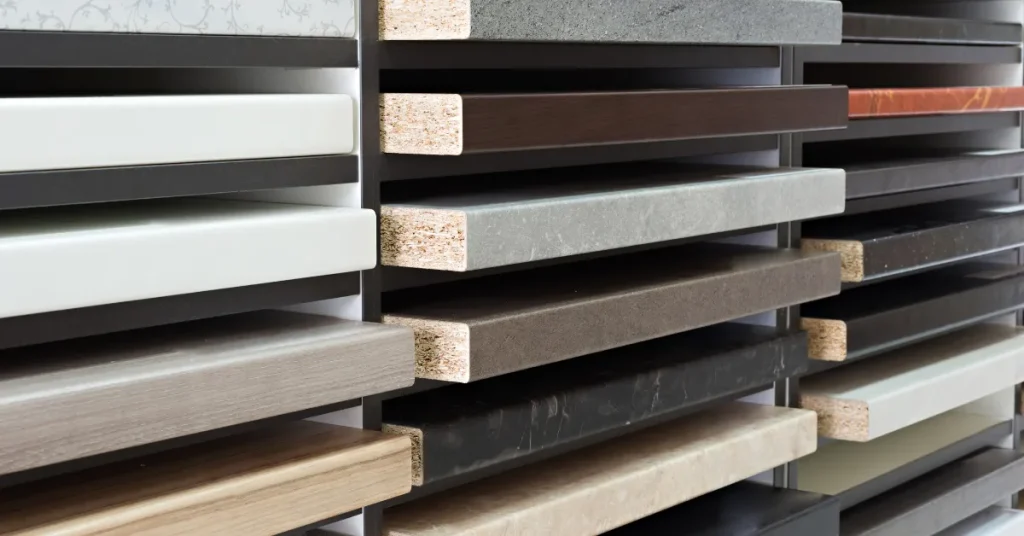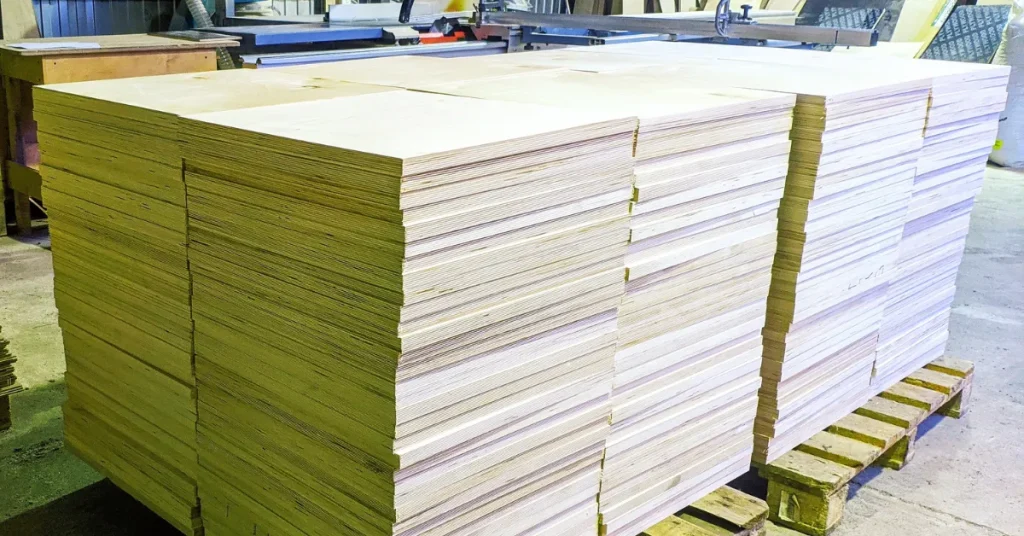23/32 plywood is approximately 0.71875 inches thick. This specific thickness is just under 3/4 inch.
Understanding the dimensions of plywood is crucial for various construction and DIY projects. Plywood offers a durable and cost-effective solution for many applications from building furniture to house sheathing.
Its multiple layers, glued and pressed together, provide remarkable strength and stability.
The unusual thickness of 23/32 inch plywood is a common choice in subflooring applications, where sturdiness and the ability to withstand foot traffic is essential.
It bridges the gap between 1/2 inch and 3/4 inch plywood, allowing for a lighter weight without significantly sacrificing structural integrity.
Perfect for contractors and homeowners alike, this plywood thickness ensures a robust foundation while keeping the material as lightweight and manageable as possible.

Measuring Up: The Thickness Of 23/32 Plywood
In the world of carpentry and DIY projects, plywood thickness is crucial. The mysterious number 23/32 inches often pops up, especially in sheet goods.
This decimal figure can throw off many, but it’s actually a specific measurement that corresponds to a certain grade of plywood. Let’s delve into the actual thickness of 23/32 inch plywood and why it’s a go-to choice for many woodworkers.
Comparing 23/32 To Other Plywood Sizes
To picture the size of 23/32 inch plywood, imagine just a hair less than 3/4 inch. Standard plywood sizes range quite a bit:
- 1/4″
- 1/2″
- 5/8″
- 23/32″ (often considered 3/4″)
- 1″
The measurement of 23/32″ lies just under the thicker 3/4″ sheets.
| Plywood Size (inches) | Approximate Thickness (mm) |
| 1/4″ | 6.35 |
| 1/2″ | 12.7 |
| 23/32″ | 18.26 |
| 3/4″ | 19.05 |
| 1″ | 25.4 |
Why Thickness Matters
The thickness of plywood determines its use and durability. Here’s why:
- Flooring: 23/32″ supports more weight.
- Cabinetry: A thicker plywood means less sagging.
- Structural Integrity: Thickness equates to strength in projects.
Choosing the correct thickness for your task can make or break a project.
Plywood Essentials: Understanding 23/32 Dimensions

Choosing the right thickness for plywood is crucial for any project. 23/32 plywood is a common choice.
It strikes an excellent balance between strength and weight. Knowing the exact thickness can help ensure your project fits together perfectly. Let’s dive into what 23/32 dimensions really mean.
The Significance Of Fractional Measurements
Plywood thickness often comes in fractional inches. These fractions represent the actual thickness of the plywood. Unlike lumber, plywood has more precise thicknesses. They are not nominal but actual sizes.
23/32 plywood is just shy of a full 3/4 inch. This slight difference matters in projects requiring tight tolerances.
Conversion Into Millimeters And Inches
It is helpful to convert fractional measurements into millimeters and inches for clarity. Here’s what 23/32 plywood converts to:
- Millimeters: 18.25625 mm
- Inches: 0.71875 inches
These conversions can assist in ensuring you have the right size for the job. It particularly helps when comparing plywood types from different countries. Always double-check these measurements when purchasing your materials.
SEO-optimized, easy to understand, and presented in a clear format suitable for readers of all ages and knowledge levels, avoiding the use of linking words or fluff.
Production Standards: Consistency In Plywood Thickness
Understanding the thickness of plywood is crucial for builders, craftsmen, and DIY enthusiasts. When discussing 23/32 inch plywood, clarity about consistency becomes vital.
Strict production standards ensure uniformity in every sheet. These standards protect the consumer and guarantee that each plywood board meets expected dimensions for a variety of projects.
Manufacturing Variations
Plywood manufacturing is a precise process, yet slight variations can occur. These variations stem from the wood’s inherent properties and the production method. Manufacturers aim to keep these differences minimal for uniformity.
- Wood veneer sources may affect end thickness.
- Pressing process impacts final measurements.
- Calibration equipment maintains consistency.
Industry Guidelines For Thickness Tolerances
Stringent industry guidelines control the allowable deviation in plywood thickness. The American Plywood Association (APA) sets these standards to ensure customers receive plywood that meets their expectations.
| Stated Thickness | Minimum Thickness | Maximum Thickness |
| 23/32″ | 0.703″ | 0.766″ |
- Measurements align with APA standards.
- Every sheet falls within a precise thickness range.
- Products labeled as 23/32″ plywood must adhere to these tolerances.
Applications: Best Uses For 23/32 Plywood
23/32 plywood is a versatile material coveted by builders and DIY enthusiasts alike. Its unique thickness pairs robustness with flexibility. This plywood serves multiple applications.
From construction projects to furniture making, 23/32 plywood is a go-to for reliability and strength. Let’s delve into where this plywood truly shines.
Typical Projects Requiring 23/32 Plywood
When durability meets demand, 23/32 plywood steps up. Here are some common projects where this plywood proves essential:
- Flooring Underlayment: Provides a stable base for flooring materials.
- Roof Sheathing: Offers solid support beneath shingles.
- Wall Sheathing: Enhances structural integrity for walls.
- Cabinetry: Forms sturdy shelves and carcasses for long-lasting use.
Strength And Durability Factors
What makes 23/32 plywood a preferred option? Here are key points:
| Feature | Benefit |
| Thickness | Resistance to bending and warping |
| Layering | Added strength from cross-grained construction |
| Material Quality | Durability for heavy-duty use |
This plywood won’t disappoint, holding up under heavy weights and frequent use. From building decks to crafting sturdy subfloors, 23/32 plywood endures and delivers.
Buying Tips: Selecting Quality 23/32 Plywood
Quality 23/32 inch plywood is essential for sturdy construction. This guide helps ensure your next purchase meets your project needs.
What To Look For When Purchasing
- Check for even thickness across the board.
- Ensure the plywood has minimal defects.
- Consistent coloring indicates quality.
- Look for plywood that is Grade A or B.
Cost Considerations
- Price can reflect quality and durability.
- Higher priced options often mean better performance.
- Balance your budget with your needs for the project.
| Grade | Price Range |
| Grade A | $60-$80 |
| Grade B | $40-$60 |
| Grade C | $20-$40 |
Diy And Professional Insights: Working With 23/32 Plywood

Understanding the thickness of 23/32 inch plywood is crucial for both DIY enthusiasts and professionals. This slightly irregular size, measuring just under 3/4 inch, can trip up even experienced hands.
Whether crafting furniture or sheathing a roof, knowing how to navigate this plywood’s nuances makes all the difference. We dive into working with this common but often misunderstood plywood thickness.
Cutting And Installation Techniques
Getting a clean cut and proper fit with 23/32 plywood requires precision. For accurate results:
- Measure twice, cut once: Ensure all measurements are precise before cutting.
- Use sharp tools: Dull blades can lead to rough edges and splintering.
- Support the sheet: Use sawhorses or a worktable to keep plywood stable.
For installation, stagger the seams for strength. Ensure you screw or nail into the center of the studs or joists. Pre-drilling can prevent splitting at the edges.
Finishing And Maintenance Advice
Proper finishing and maintenance ensure your 23/32 plywood project stays in top condition:
| Finishing Step | Advice |
| Sanding: | Start with a coarser grit, finish with a fine grit for a smooth surface. |
| Sealing: | Apply a quality sealant to protect from moisture and wear. |
| Painting: | Use a primer first, then apply paint for even coverage. |
Maintenance is simple. Clean with a damp cloth, and reapply sealant as needed. For outdoors, check for wear once a year and reseal if necessary.
By mastering these techniques, you’ll ensure that any project using 23/32 plywood stands the test of time and function.
FAQs About How Thick Is 23/32 Plywood
Is 23 32 Equivalent To Three Quarter Inch Plywood?
No, 23/32 inch plywood is not equivalent to three-quarter inch plywood. Three-quarter inch plywood is slightly thicker at 0. 75 inches.
What Is The Actual Thickness Of 23 32 Plywood?
The thickness of 23/32 plywood is approximately 0. 71875 inches or about 18. 26 millimeters.
What Is The Actual Thickness Of 3 4 Plywood?
The actual thickness of 3/4 inch plywood typically ranges from 0. 703 inches to 0. 75 inches.
What Is The Actual Thickness Of 5 8 Plywood?
The actual thickness of 5/8-inch plywood typically measures about 0. 594 inches or just under 5/8 inch due to manufacturing tolerances.
Conclusion
Understanding 23/32-inch plywood thickness helps in selecting the right material for your project.
It’s just shy of 3/4-inch, offering sturdy support yet still being manageable. Remember, precise measurements are key to a successful build, so always verify thickness before purchase.
Choose wisely for optimal results in your construction or renovation endeavors.
Resources:
1. https://www.nist.gov/system/files/documents/2017/06/13/doc_ps_1-09_structural_plywood.pdf
